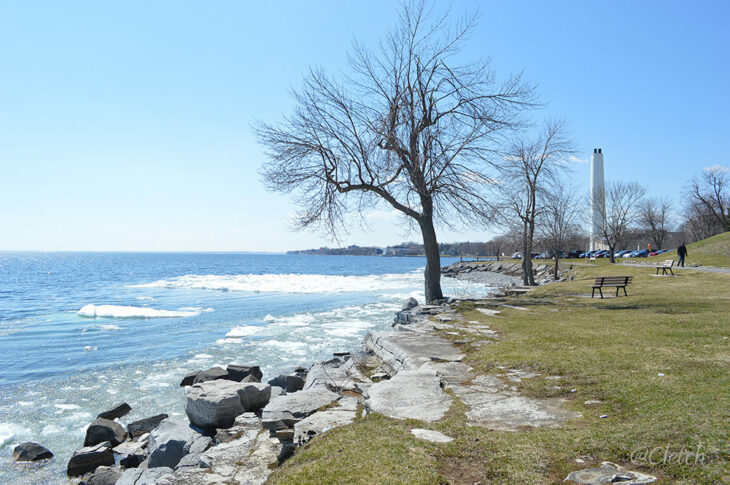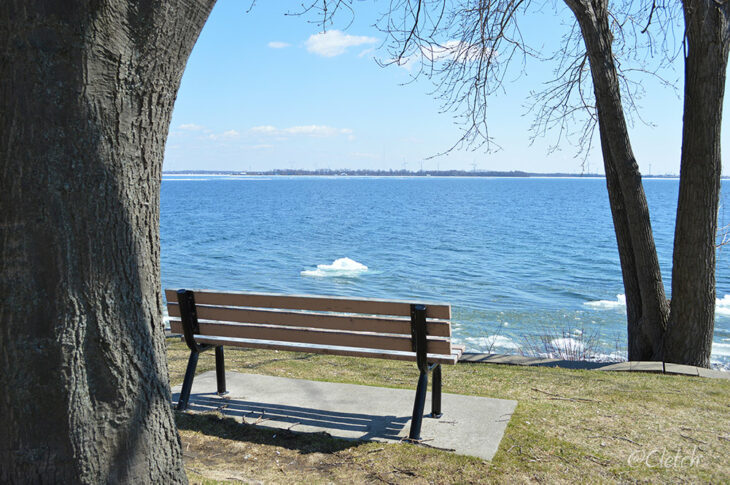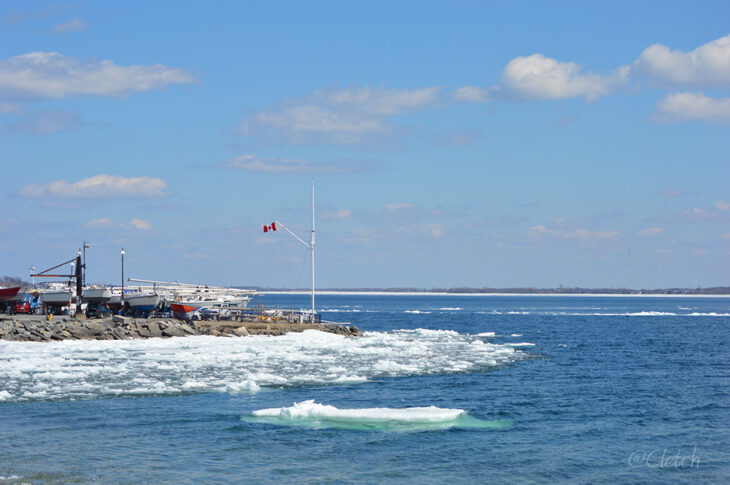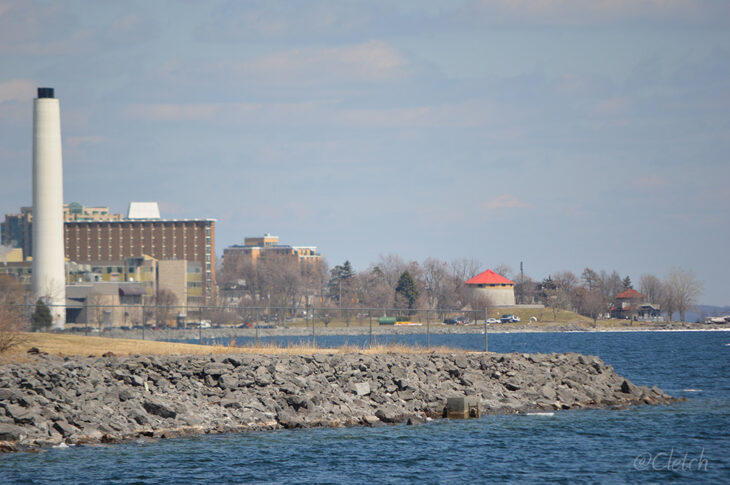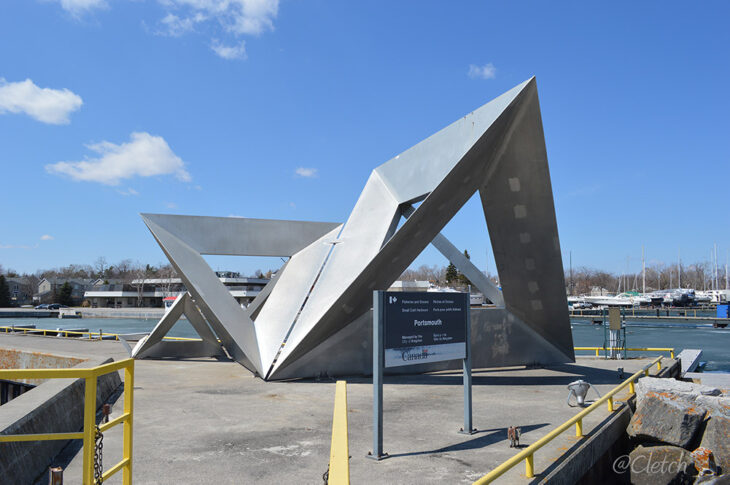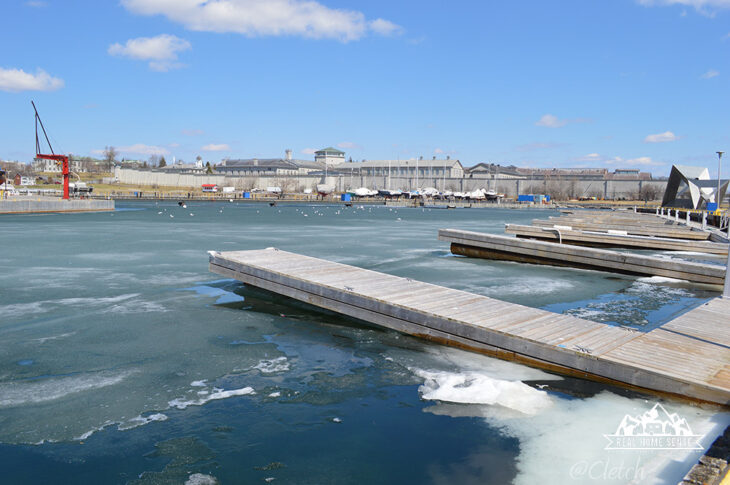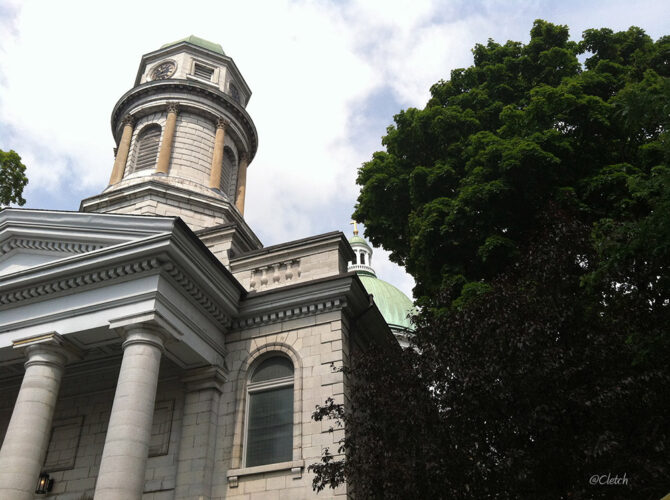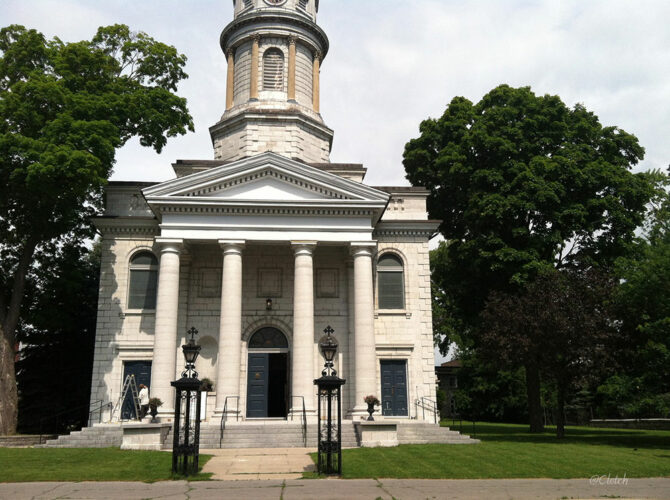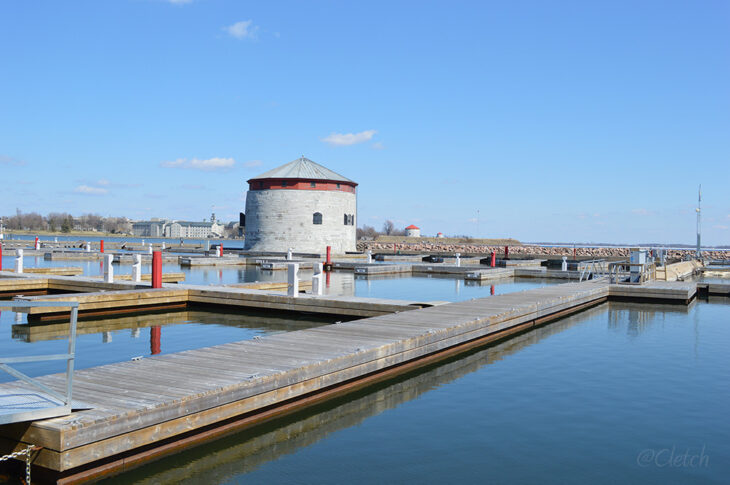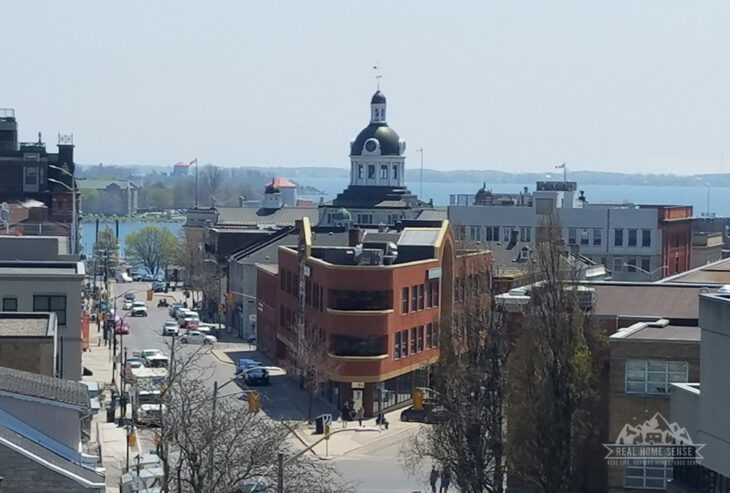
Kingston is located in Eastern Ontario. It’s approximately 260 kilometers (165 miles) from Toronto, travelling east, or approximately 195 kilometers (121 miles) west of Ottawa. Easiest driving access is via Highway 401, but the most scenic (if not lengthy!) drive is via Highway 2.
The last Canadian census was completed for the year 2016, and during the previous five years, Kingston, Ontario grew by approximately .4% (more growth is shown if you look at the full metropolitan area). In 2016, Kingston proper had a population of 123,798, making it the 25th largest city in Canada, and the 11th largest city in Ontario. Dry population statistics are but one way to measure the greatness of the places we call home.
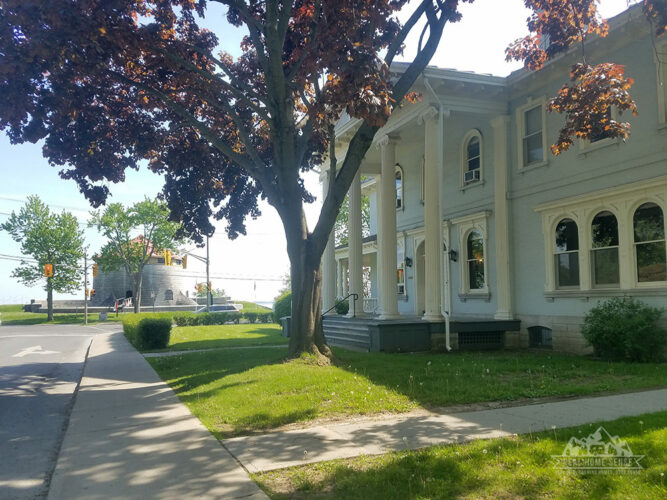
The city itself is beautiful, and that’s wonderfully illustrated by the architecture of many of its fine buildings. Think Italian Villa, and you should also think of Kingston. For starters, there is Bellevue, once the home of Sir John A. MacDonald. Think ornate cornice, Doric columns, and a balustrade terrace, and you’ll get the idea. Bellevue is billed as “one of the most spectacular Italian Villas in Ontario” (and beyond). There are other villas like Bellevue, and one such villa is described as having a central tower, topped by an acroterion, with an iron balcony on the second floor. These are gorgeous, well-preserved examples of local architecture. And if you haven’t heard, in addition to being billed as a great system of waterways, Kingston is often called “The Limestone City”. It gets this nickname not only due to the abundance of limestone deposits, but also due to the many 19th century historical buildings that were built with limestone (of which Bellevue is perhaps the most well known).
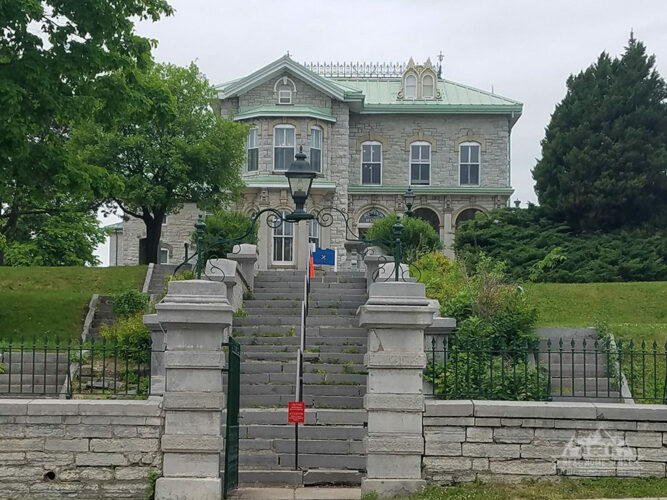
Kingston is also surrounded by natural beauty. Let’s start with the water.
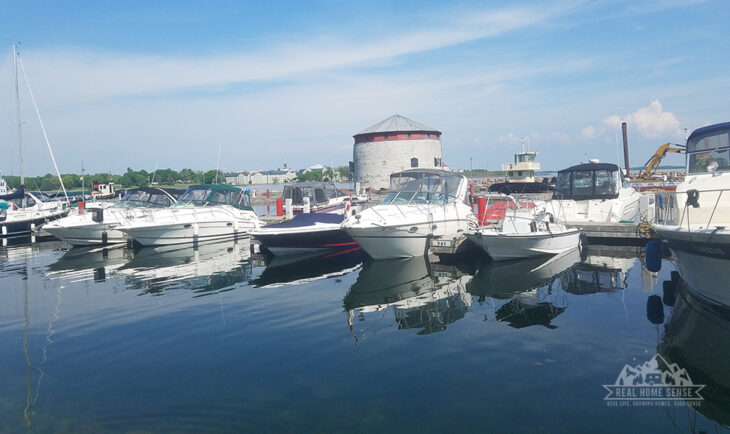
Kingston is also called “Canada’s first capital of fresh water sailing.” Rightly so; it’s on the shores of the magnificent St. Lawrence River and Lake Ontario. Kingston was originally a First Nations settlement, and became an important trading post (for the fur trade) in the 17th Century. It was the first “capital” of the then-Province of Canada. But back to nature, as the saying goes.
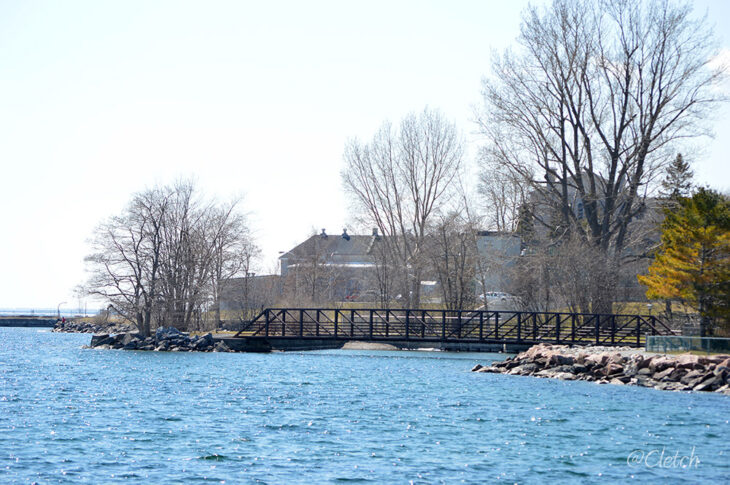
The city is a World Heritage Destination. That’s hugely significant: there are only 15 such sites in the world. It’s the gateway to the 1000 Islands and the Rideau Canal. If you’re a real outdoors person, you won’t be disappointed! In this article we’ll briefly cover Lemoine Point Conservation Area, Lake Ontario Park, and Little Cataraqui Creek Conservation Area; but there are many more places to enjoy than these.
How about we start with the last one, Little Cataraqui Creek? It’s large; some 394 hectares. Adults can get an annual pass for $80, and my, is it ever worth it! There are activities for every season, including hiking, cross-country skiing, and canoeing. There’s fishing, picnic areas, and public washrooms. You can even get in on “Maple Madness” in the spring, to learn about the process of sugaring. Lake Ontario Park is on the east side of Cataraqui Bay, on the shore of the lake. Dating back to 1894, this park is also open all year around. However, its ‘landscape’ has changed considerably over the years, and a recent report — the Lake Ontario Park Revitalization Study — determined the future of the Park by way of this vision: “Lake Ontario Park will be maintained and enhanced as publicly owned parkland in support of its role as one of Kingston’s primary waterfront open spaces.”
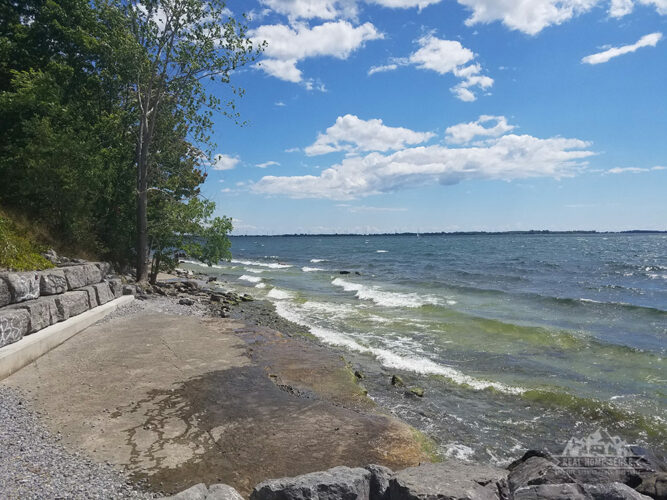
Lemoine Point Conservation Area is “136 hectares of forest, field and marsh”, and oh yes, it too has a great waterfront: some 2500 metres of Lake Ontario shoreline! Along with activities like hiking, swimming, and cycling, Conservation visitors can also take in the deciduous woods, spring wildflowers, and several species of both resident and migratory birds.
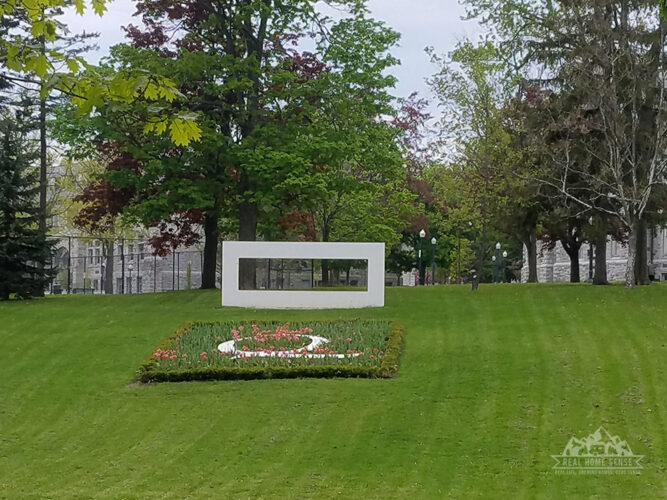
Kingston’s World Heritage Destination is one of many things that make the city a world-class destination: another, as alumni, professors, and many others would tell you, is Queen’s University. While one of several major higher education institutes, Queen’s is the most well known. Founded by Royal Charter of Queen Victoria, in 1841 (over two decades prior to Canadian confederation), this prestigious university is one of the earliest degree-granting institutions in the country, and the first one to establish a student government. It has always been at the forefront of shaping Canadian values and policies, and is has a strong and vibrant international reputation.
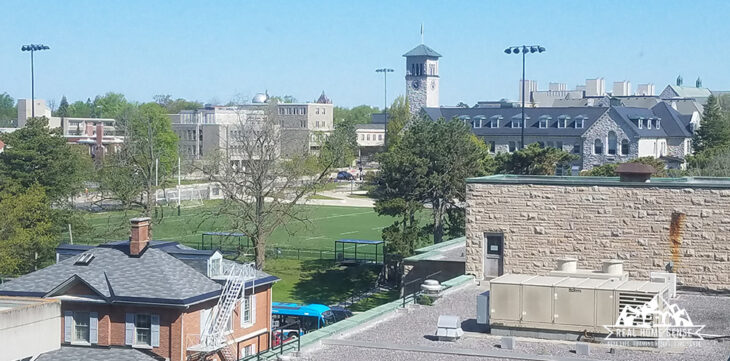
So in Kingston, you have city recognized as world-class, a place of natural beauty and splendour, a city replete with fabulous architecture, and a city known for educational excellence. And yet there’s more to Kingston, on several fronts.

Kingston has always had a large military importance, and that history probably starts with the construction of Fort Frontenac, in 1673. Since then, there’s of course historic Fort Henry, the fact that military ships were built at the Kingston Royal Naval Dockyard from the late 1700’s to the mid-1800’s, the history of the Royal Canadian Horse Artillery, and much more. Canada’s first military college, the Royal Military College of Canada, was opened at Point Frederick in 1876.
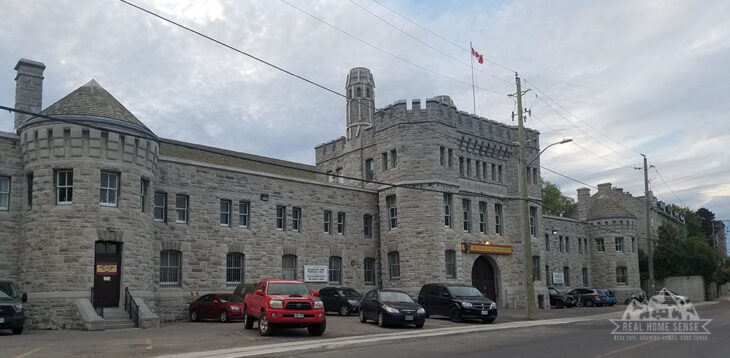
The City of Kingston is not without fine dining, night life, and sports!
K-Rock Centre, on Barrack Street, is an amazing multi-venue facility. In addition to being the home of the Kingston Frontenacs (hockey), top entertainers, acts and other luminaries such as Cirque du Soleil, Deepak Chopra, and Sarah McLachlan have graced its halls. And four times, including this year, the Centre has been voted Venue of the Year under 8,000 seats by the Canadian Music and Broadcast Industry Awards. Need a place to stay before or a night out? There are over 2,000 B&B and hotel rooms in Kingston. Need something good to eat? Within five minutes of K-Rock you’ll find the King Street Sizzle Restaurant and Bar. In addition to fresco dining in good weather, this establishment serves breakfast, lunch, and dinner, and even offers a children’s menu. K-Rock and King Street Sizzle are only two of the numerous places you can go for a good meal or entertainment; perhaps you’ll line something up after a great hike at Lemoine Point?
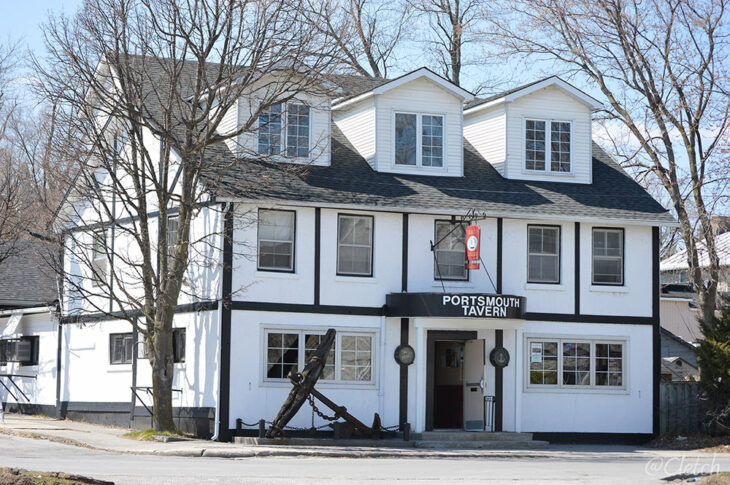
Now here’s a question about Kingston’s history that, well, you may not want to answer. What is in Kingston that was first opened in 1835, making it the oldest such structure still in use in the world?
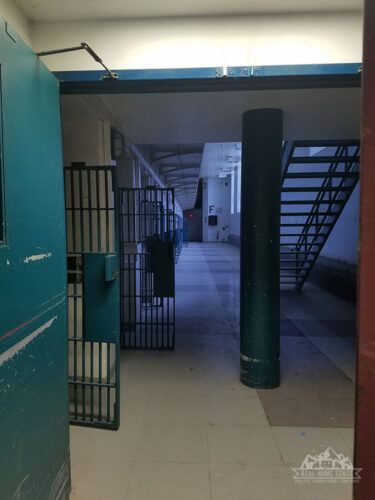
Need a clue? It was built when the average height of a man was 5’ 6” and his life expectancy was 39 years. Yes, we’re talking about Kingston Penitentiary, the oldest prison in continuous use in the world. The likes of horrific killer Paul Bernardo were among the inmates of this infamous Canadian landmark. The Canadian government announced in mid-April, 2012 that it would finally close down KP. It officially closed in 2013 and now offers tours.
We don’t want to end our article in jail, so let’s lighten things up and talk about some of the things happen in Kingston every year.
If you love the ‘street scene’, there’s the annual Kingston Buskers Rendezvous in July, where entertainers from around the world magically appear for a week to please you. And the Fanfayr Arts & Craft Show takes place every summer as well, bringing you one hundred of Ontario and Quebec’s best artists and crafts people at Confederation Park. The music & bar scene in Kingston is alive and grooving. Head to the Toucan, the Merchant, or any number of other downtown Kingston locations for a taste of local bands. Those who love the winter won’t be left without something to do either. In addition to the great park systems and camping we’ve already talked about, there are a number of special festivals and events in Kingston. One rather well-known annual winter event is “Feb Fest”, an annual winter party that brings in some 30,000 tourists. It features skating, entertainment, horse-drawn wagon rides, and much more.
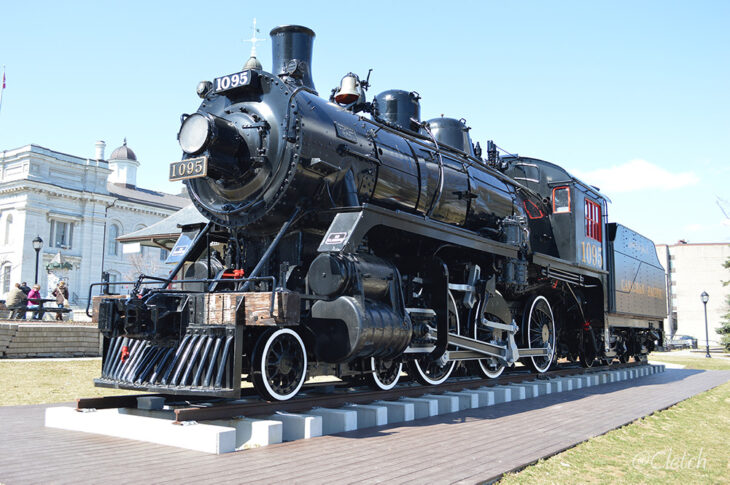
Whether nature, architecture, education, military history, or entertainment, you can always count on something interesting to see or do, in any season, in Kingston.
